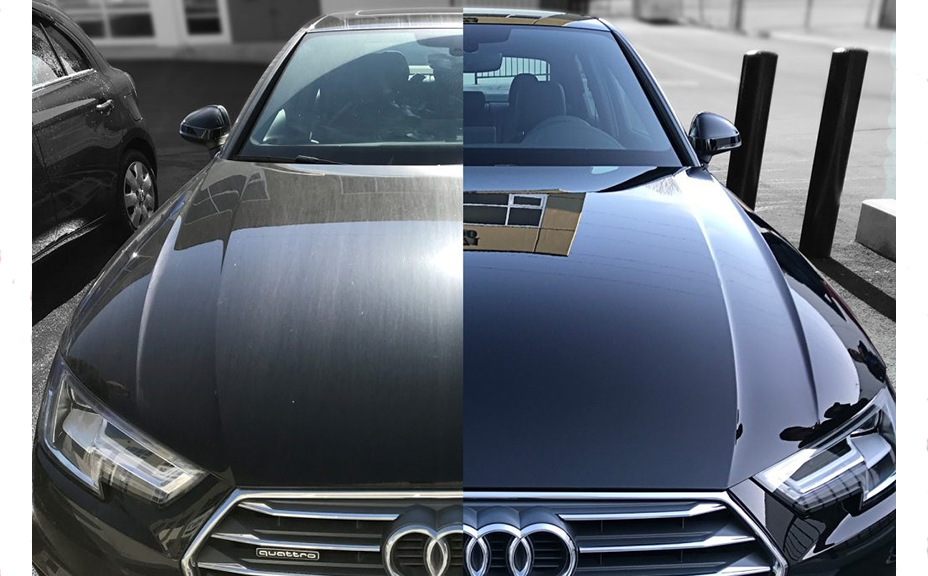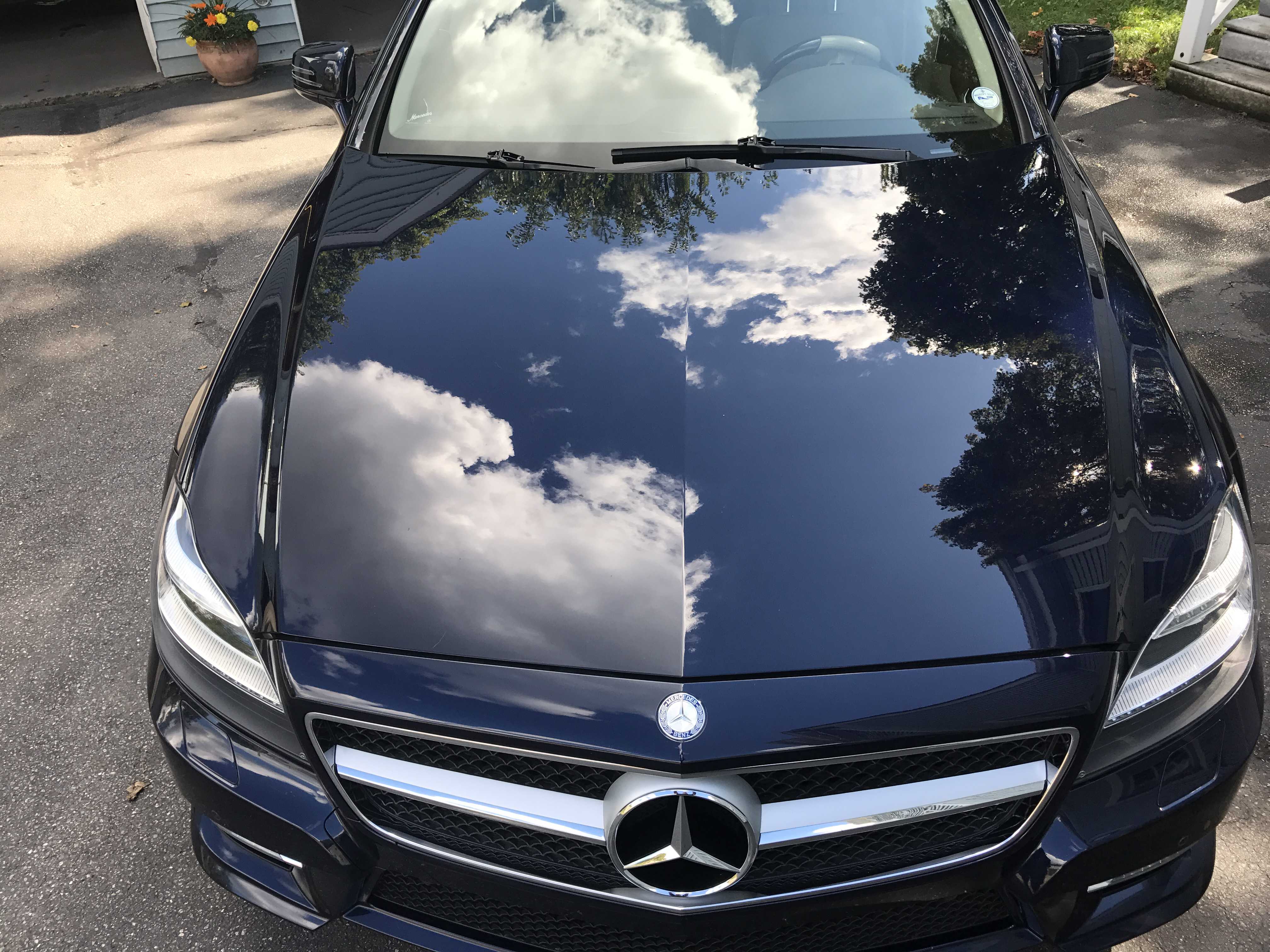What to expect during a Ceramic Coating Newark appointment
Discovering the Science Behind Car Ceramic Coating and Its Protective Features
The science of car ceramic coating presents a remarkable study in advanced automobile defense. Made up mainly of silicon dioxide and polymers, these coatings create a robust bond with automobile paint. This interaction enhances longevity versus ecological hazards while supplying hydrophobic advantages. However, the complexities of exactly how these layers work and their lasting advantages continue to be less comprehended. Unboxing these information exposes why ceramic coatings are ending up being a recommended option for lorry treatment
What Is Ceramic Coating?
Ceramic coating is a fluid polymer that chemically bonds to the surface of a car's paint. This sophisticated protective layer improves sturdiness and provides superior resistance to ecological factors. Unlike typical wax or sealers, which give momentary security, ceramic finishes develop a lasting guard that can hold up against extreme conditions such as UV rays, acidic impurities, and severe weather. When applied correctly, the coating develops a hydrophobic surface, creating water to bead and slide off, which assists in maintaining the automobile's cleanliness. In addition, it uses improved gloss and depth to the paint, making the vehicle show up more polished and lively. The application process generally involves thorough surface area preparation, consisting of cleaning and polishing, to ensure peak bonding. Because of this, ceramic coatings are becoming increasingly popular among car enthusiasts and those looking for to shield their investments, promising to maintain the car's aesthetic allure while lowering the regularity of upkeep.
The Structure of Ceramic Coatings
The detailed formula of ceramic coatings mostly contains silicon dioxide (SiO2), which is derived from all-natural resources like quartz and sand. This key element supplies the foundation for the coating's toughness and safety high qualities. In addition to SiO2, ceramic finishes often include different polymers and additives that boost bond, flexibility, and resistance to environmental variables. These substances work synergistically to create a robust obstacle versus pollutants such as dust, chemicals, and UV rays.Furthermore, some solutions integrate titanium dioxide (TiO2) or various other nanomaterials, which can increase the coating's hydrophobic buildings, causing enhanced water repellency. The exact structure can differ greatly amongst makers, influencing efficiency and durability. Eventually, the combination of these aspects finishes in a safety layer that not just boosts the aesthetic appeal of lorries however also offers to prolong their life-span by protecting the surface area from potential damage.
How Ceramic Coatings Work
Understanding how ceramic finishes function involves discovering their chemical make-up, which adds to their safety high qualities. The application process is vital for attaining perfect outcomes, while longevity and toughness elements identify the coating's performance over time. With each other, these components highlight the benefits and performance of ceramic finishes for car defense.
Chemical Composition Explained
While numerous car proprietors look for long-lasting defense for their vehicles, the chemical structure of ceramic finishes plays an important duty in their effectiveness. These coverings largely contain silicon dioxide (SiO2), which is derived from all-natural minerals. This compound creates a solid bond with the automobile's paint, creating a long lasting, protective layer. Furthermore, many ceramic finishes contain titanium dioxide (TiO2), boosting their hydrophobic buildings and resistance to UV rays. The existence of polysiloxanes can better improve adaptability and longevity. With each other, these aspects add to the coating's capacity to drive away water, dust, and pollutants, while likewise giving a high-gloss coating. Comprehending this chemical structure aids car proprietors appreciate the durable protection used by ceramic coatings.
Application Refine Overview
Applying ceramic layers involves a thorough procedure that guarantees optimal bonding and defense for the lorry's surface. At first, extensive cleaning and decontamination of the car's outside are performed to get rid of dirt, gunk, and previous waxes. This action validates that the surface is devoid of impurities that could impede adhesion. Following this, the paint is often brightened to improve clarity and get rid of any type of imperfections. When prepared, the ceramic coating is applied in tiny sections making use of an applicator pad, enabling uniform insurance coverage. The coating is then entrusted to treat, creating a solid chemical bond with the surface. Correct curing times and problems are vital, as they validate the coating attains its optimum effectiveness and safety qualities.
Long Life and Durability Factors
Ceramic coverings are designed to give durable security through their advanced chemical make-up, which creates a robust obstacle versus environmental impurities. The toughness of these finishes is influenced by factors such as the density of the application, the high quality of the product, and the conditions under which the vehicle is subjected. Top quality ceramic my review here coverings can last several years, resisting scrapes, UV rays, and chemical discolorations. Proper upkeep, consisting of regular cleaning and regular reapplication, can additionally improve durability. In addition, environmental aspects like environment and direct exposure to pollutants can affect the lifespan of the coating. Overall, when used and maintained correctly, ceramic coatings use remarkable durability, making them a prominent choice for car lovers looking for to preserve their car's look.
Hydrophobic Residences and Water Repellency
Hydrophobic homes are a characteristic of quality car ceramic finishes, considerably boosting the car's surface area performance. These finishings produce a molecular bond with the car's paint, resulting in a surface that repels water effectively. When water enters call with a ceramic-coated surface area, it grains up and rolls off, lessening the amount of liquid that stays on the paint. This habits not only adds to an aesthetically pleasing look but additionally reduces the accumulation of impurities such as dust, grime, and roadway salts.The improved water repellency results in simpler cleansing and upkeep, as less initiative is needed to remove undesirable substances. Additionally, the hydrophobic nature of ceramic coatings helps in avoiding water spots, which can mar the surface of uncoated surface areas. Generally, the unification of hydrophobic properties in ceramic coverings plays an essential duty in keeping the lorry's excellent appearance while simplifying maintenance.
Protection Against Scratches and UV Damage
Car ceramic coatings provide considerable protection versus scrapes and UV damage. The scratch resistance system creates a durable layer that takes in impacts, while the UV protecting benefits help keep the car's paint integrity in time. Together, these attributes add to a longer-lasting and aesthetically appealing finish.
Scrape Resistance Mechanism
Using advanced technology, ceramic coverings give a durable shield versus scratches and UV damages, improving the longevity and appearance of lorry surfaces. The scrape resistance mechanism of these coatings is credited to their distinct molecular structure, which creates a long lasting bond with the vehicle's paint. This bond develops a hard, protective layer that can take in impacts and withstand abrasions. Furthermore, the smooth surface area of the coating lowers friction, making it difficult for contaminants to adhere and trigger scrapes. The chemical make-up of ceramic layers frequently includes nanoparticles that enhance the protective layer, more enhancing its strength. Cars treated with ceramic finishes show markedly improved scratch resistance compared to traditional wax or sealants, ensuring a pristine finish over time.
UV Protecting Perks
The safety high qualities of ceramic finishes prolong beyond scratch resistance to include substantial UV securing advantages. These coverings create a durable obstacle that reflects unsafe ultraviolet rays, protecting the vehicle's paint and underlying materials. Long term exposure to UV radiation can lead to fading, oxidation, and degeneration of the paint finish. By including ceramic layers, vehicle proprietors can successfully reduce these risks, maintaining the aesthetic allure and stability of their cars and trucks. Furthermore, the UV blocking homes contribute to improved durability, decreasing the regularity of repainting and upkeep. Ultimately, the combination of ceramic coverings offers an extensive solution for securing cars from the destructive effects of sunlight exposure, making sure a sustained, lively look over time.
The Durability and Upkeep of Ceramic Coatings

Often Asked Concerns
Can Ceramic Coating Be Applied to Any Type Of Kind Of Automobile?
Ceramic coating can be used to numerous kinds of cars, consisting of cars and trucks, vehicles, and bikes. Nonetheless, surface area prep work and compatibility with details products are vital for excellent attachment and effectiveness of the coating.
Just How Much Does Ceramic Coating Generally Price?
Ceramic site link coating usually costs between $500 and $2,000, relying on aspects such as automobile size, coating quality, and specialist application. The financial investment can give resilient security and boost the automobile's appearance gradually.

Is Professional Application Necessary for Best Outcomes?
The requirement of expert application usually relies on desired outcomes. Professionals typically assure proper surface area preparation and application strategies, causing perfect bonding and long life of the coating, which may be testing for inexperienced people to achieve.
Can Porcelain Coatings Be Removed or Fixed?
Ceramic coverings can be gotten rid of or repaired, though the procedure might need specific solvents or strategies - Ceramic Coating Newark. Proper elimination is important to avoid damage to the underlying surface, stressing the value of professional aid for optimal results
Exactly How Does Porcelain Coating Compare to Standard Wax?
The comparison in between ceramic coating and conventional wax reveals that ceramic coatings offer exceptional sturdiness, boosted defense versus ecological contaminants, and longer-lasting luster, while wax requires much more regular application and gives less overall resistance to damage.